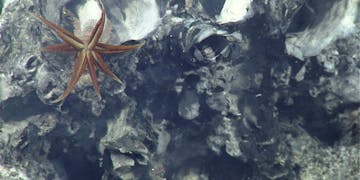Pompeii worms are enigmatic animals that are only found on the surface of active hydrothermal chimneys. Their name refers to the ancient Roman city of Pompeii that was destroyed by ash raining down from an eruption of the large volcano Mount Vesuvius just miles away. Instead of being devastated by volcano-like conditions, these worms thrive in the scalding hot, mineral-rich waters at deep-sea vents.
The Pompeii worm is an extremophile
Construction begins on MBARI’s new flagship research vessel
A new state-of-the-art ship will expand MBARI’s research capabilities.
